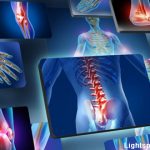Reproductive health, biosimilars, IgG4-related disease and much more—five speakers give us a sneak peek into important topics being addressed at the ACR’s 2025 State-of-the-Art Clinical Symposium, April 4–6.


Reproductive health, biosimilars, IgG4-related disease and much more—five speakers give us a sneak peek into important topics being addressed at the ACR’s 2025 State-of-the-Art Clinical Symposium, April 4–6.

Insights into osteoporosis treatments as societies around the world age.

In January, the U.S. Food & Drug Administration approved indomethacin in an oral suspension, a generic version of Indocin Oral Suspension. The agency also issued a boxed warning and updated label for denosumab, warning of the risks of severe hypocalcemia in patients with chronic kidney disease.

During ACR Convergence 2023, experts discussed developments in the treatment and diagnosis of osteoporosis, addressing risks of treatment discontinuation, the use of bone turnover markers in patient assessment and vitamin D.
The accepted wisdom is that the negative effects of glucocorticoids on bone depend on the dose and treatment duration. Adami et al. conducted this study to determine, in a real-life setting, the risk of fragility fracture associated with the dose of glucocorticoids in patients with inflammatory rheumatic musculoskeletal diseases.

In late December, the FDA approved subcutaneous abaloparatide for the treatment of men with osteoporosis at a high risk of fracture. This approval is based on a placebo-controlled study that showed abaloparatide led to significant increases in bone mineral density of the lumbar spine, total hip and femoral neck. Abaloparatide was approved in April 2017 for the treatment of postmenopausal women with osteoporosis at high risk for fracture.

A study from Amigues et al. found that bisphosphonate-associated osteonecrosis of the jaw is rare in patients with osteoporosis and may occur more often in patients treated with injectable zoledronic acid than in those treated with the oral bisphosphonates.

ATLANTA—The ACR released a summary of its updated guideline for the Prevention and Treatment of Glucocorticoid-Induced Osteoporosis in September. Many patients take glucocorticoids for a variety of inflammatory conditions, and anyone who is taking glucocorticoid medications and has other risk factors for osteoporosis increases their risk of developing glucocorticoid-induced osteoporosis. New osteoporosis medications and new…

Using three complicated patient cases, Kenneth G. Saag, MD, MSc, shared his expertise on osteoporosis and walked through his thought process and the literature, during a session of the 2022 ACR Education Exchange.

In a small study of men with low bone mineral density (BDM) living with HIV and taking anti-retroviral therapy, both zoledronate or denosumab were well tolerated and effective for bone mineral density of the lumbar spine and femoral neck.